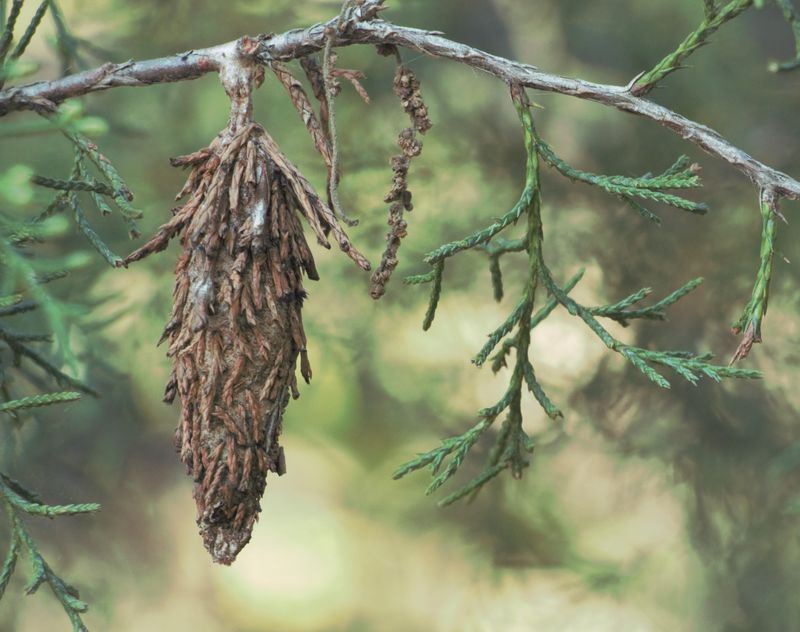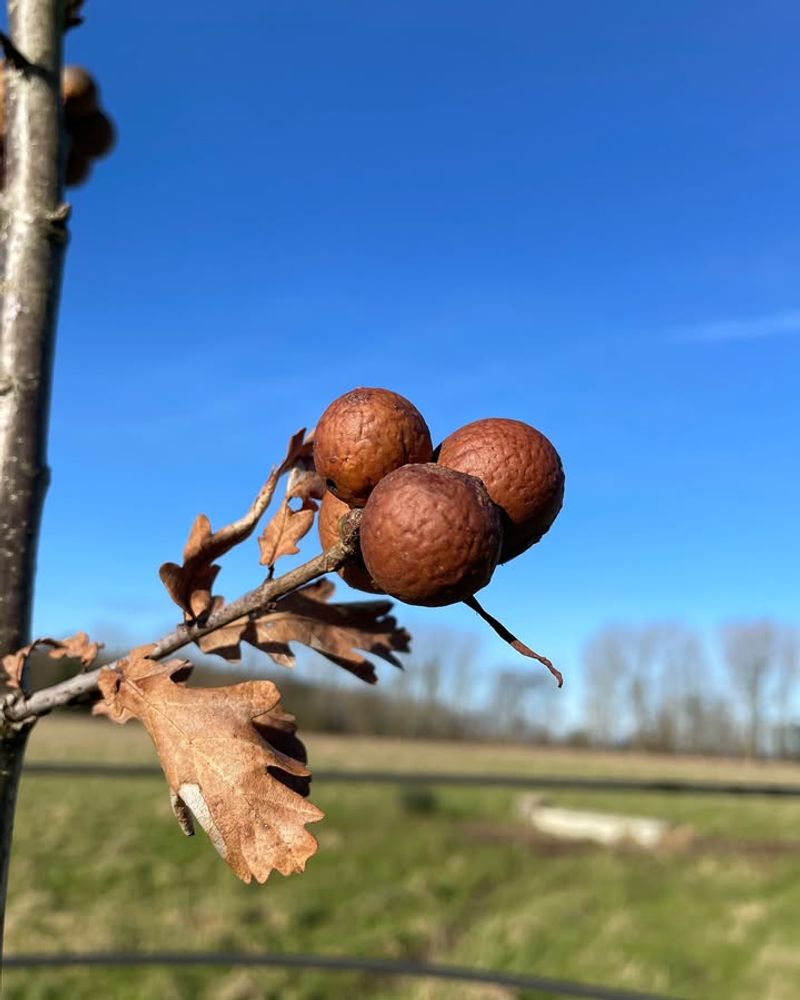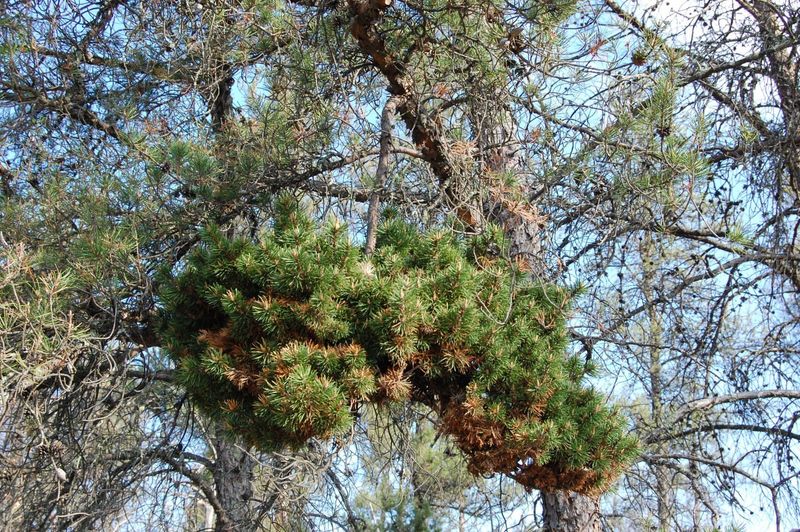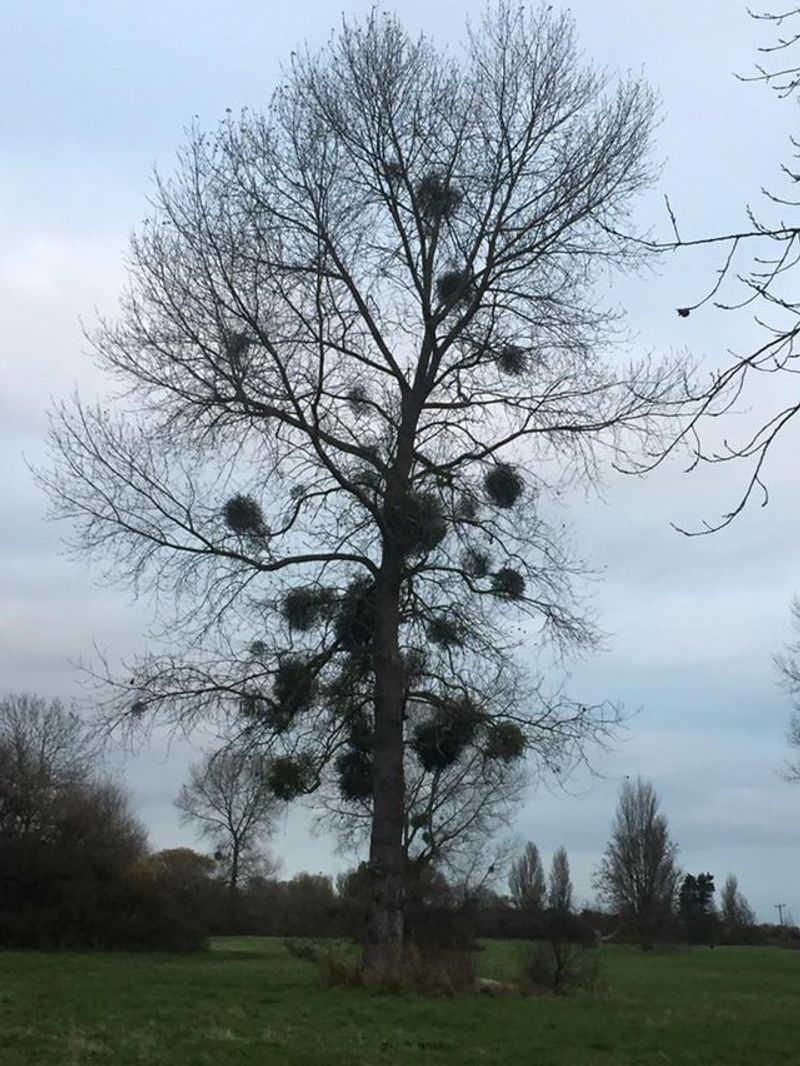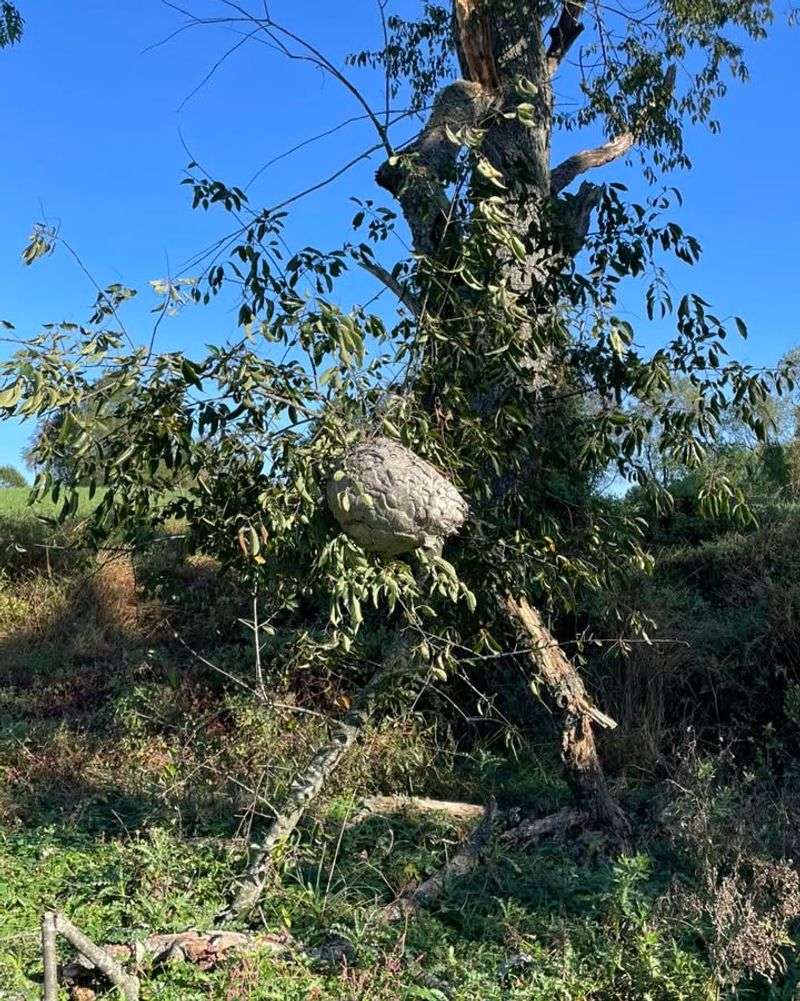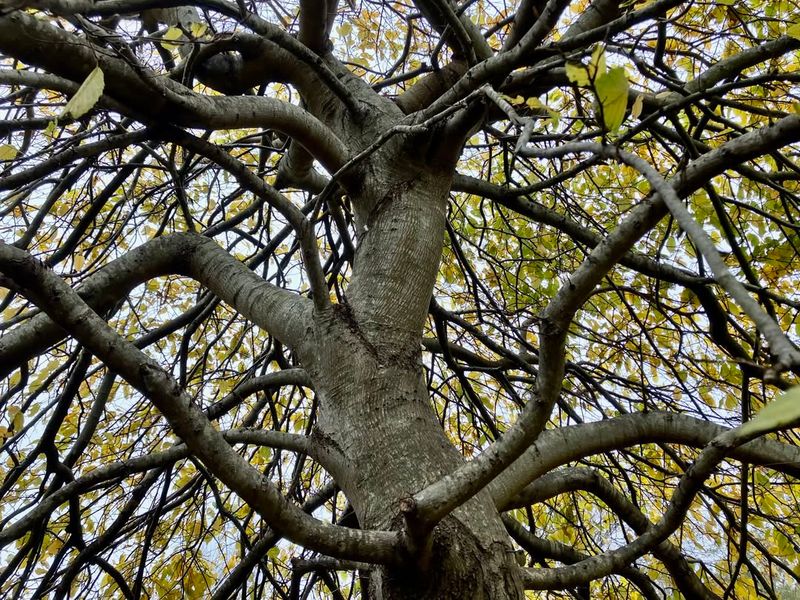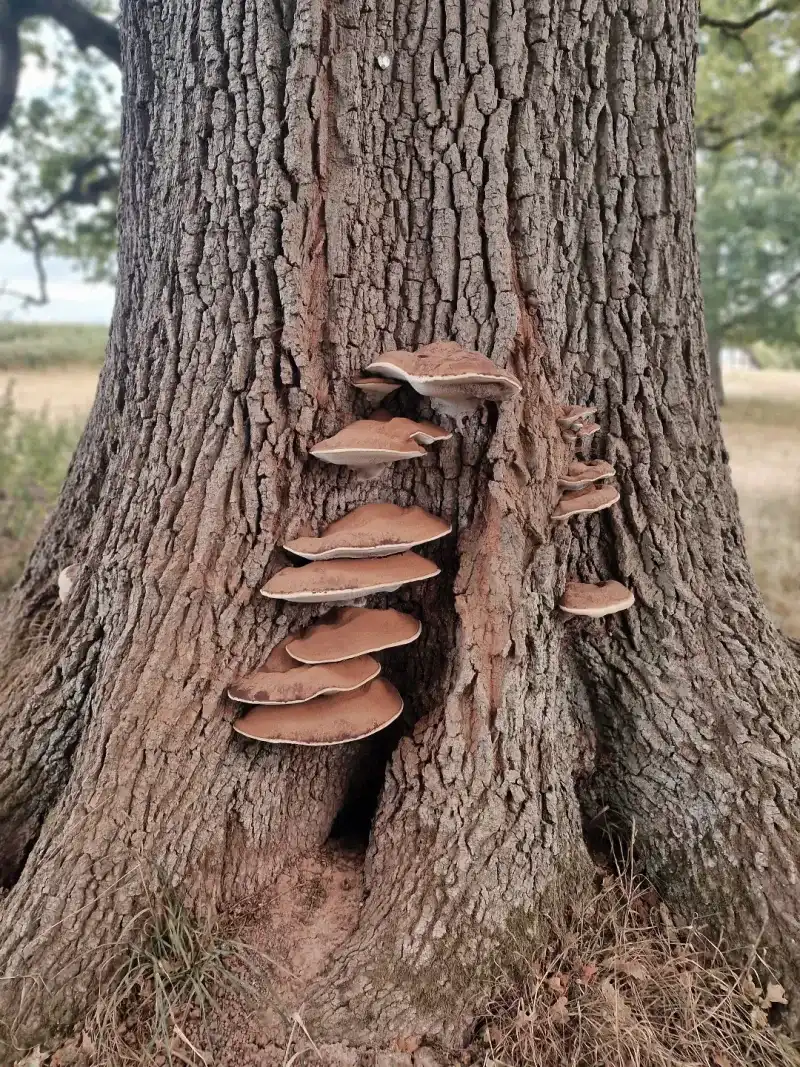If you’ve spotted what looks like a nest hanging in a tree in Maryland, you might be surprised to learn it’s not what you think.
Those mysterious balls are often something entirely different, quietly growing right above your head. I first mistook one for a bird’s home, only to realize it had a totally different purpose.
Let’s take a closer look at what might actually be hanging in your tree this season.
1. Squirrel Dreys
Squirrels build leafy homes called dreys that often get mistaken for bird nests in Maryland trees. Unlike bird nests, dreys are much larger—about the size of a basketball—and made from tightly woven leaves and twigs.
You’ll typically find them wedged in the fork of branches high up in oak or maple trees. Gray squirrels in Maryland prefer building multiple dreys throughout their territory as backup shelters.
During winter, these structures become more visible when surrounding leaves fall away. If you see movement or hear scratching sounds, you’ve probably found an active squirrel home rather than an abandoned bird nest.
2. Bagworm Cocoons
Bagworms create strange-looking protective cases that dangle from branches like tiny ornaments. Made from silk and bits of the host tree, these cone-shaped cocoons can range from one to two inches long.
Maryland homeowners often spot them on evergreens, especially arborvitae and juniper trees. While they might seem harmless, bagworm infestations can seriously damage or even kill trees if left untreated.
The caterpillars inside feed on needles and leaves throughout spring and summer. Check your trees carefully in late fall—removing these cocoons by hand prevents next year’s population from exploding and causing widespread harm.
3. Galls
Galls are unusual growths that appear when insects or mites lay eggs inside tree tissue. Maryland’s oak trees frequently develop round, ball-like galls that homeowners mistake for small nests or seed pods.
Oak apple galls and gouty oak galls are particularly common throughout the state. The tree responds to the insect’s chemicals by forming these abnormal growths, which provide food and shelter for developing larvae.
Most galls won’t seriously harm healthy, mature trees, though they certainly look odd. Different insects create distinctly shaped galls—some resemble fuzzy balls while others look more like woody knots sprouting from branches and leaves.
4. Witches’ Broom
Witches’ broom is a peculiar deformity where dense clusters of twigs grow abnormally close together, creating a bushy, nest-like appearance. Fungi, viruses, or tiny insects called mites typically cause this strange growth pattern in Maryland trees.
The tangled mass of branches can grow quite large over time, sometimes reaching several feet across. Hackberry trees across Maryland are especially prone to developing these formations, though many tree species can be affected.
While witches’ broom rarely kills the tree, it does look alarming and can weaken affected branches. Pruning out these unusual growths helps improve your tree’s appearance and overall health.
5. Mistletoe Clumps
Mistletoe forms rounded, green clumps high in tree branches that many people confuse with leafy nests. As a parasitic plant, mistletoe attaches itself to Maryland trees and steals water and nutrients from the host.
Birds spread mistletoe by eating its berries and depositing seeds on branches through their droppings. The plant stays green year-round, making it especially noticeable during winter when deciduous trees lose their leaves.
Heavy mistletoe infestations can weaken trees over time, potentially causing branch dieback. While it’s famous for holiday traditions, mistletoe can become problematic for Maryland’s oaks, maples, and other hardwood trees if it spreads too aggressively.
6. Old Hornet or Wasp Nests
Hornets and wasps construct impressive paper nests that can easily be mistaken for unusual bird homes. Bald-faced hornets, common throughout Maryland, build gray, football-shaped nests that hang from tree branches or attach to trunks.
Made from chewed wood fibers mixed with saliva, these nests have a distinctive papery texture. By late fall, the colony dies off, leaving behind the empty nest structure.
While abandoned nests pose no threat, never approach one that might still be active during warm months. Maryland’s paper wasps also create smaller, umbrella-shaped nests under branches that look nothing like typical bird nests once you examine them closely.
7. Clumps of Leaves and Debris
Sometimes what appears to be a nest is simply a random collection of leaves, twigs, and other debris trapped in branches. Strong winds and storms throughout Maryland frequently blow materials into trees, where they get stuck in branch forks.
Unlike actual nests, these clumps lack the careful construction and woven structure that birds create. They often appear suddenly after severe weather and may fall apart or blow away during the next windstorm.
Plastic bags also occasionally get caught in trees, creating nest-like shapes from a distance. A closer inspection usually reveals the random, messy nature of these accidental accumulations versus the intentional architecture of real animal homes.
8. Bracket Fungi Clusters
Bracket fungi sometimes grow in clustered patterns that create rounded, shelf-like formations resembling nests from certain angles. Also called shelf fungi, these organisms feed on dead or dying wood in Maryland’s forests and neighborhoods.
Unlike soft, flexible nests, bracket fungi feel hard and woody to the touch. They come in various colors—from bright orange to brown to white—depending on the species.
Finding bracket fungi on your tree indicates internal decay, which is a more serious concern than any nest. Trees with extensive fungal growth may need evaluation by a certified arborist to assess their structural safety and determine if removal is necessary for your Maryland property.



